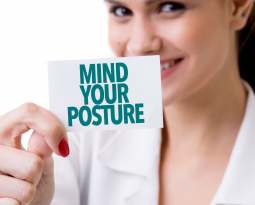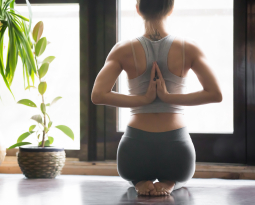
Better Posture for Healthier Children
“Sit up straight, don’t slouch!” A common phrase parents tell their children. Parents recognize the importance of having good posture, but do they actually understand why it is so important for their children?
Proper posture plays a fundamental role in the anatomical development of children from a young age. Posture refers to the body’s alignment and positioning with respect to the ever-present force of gravity.
Whether we are standing, sitting or lying down, gravity exerts a force on our joints, ligaments and muscles. When the body is in proper alignment, the bones, not the muscles support our weight, reducing overall effort and strain.
Think about it, the first thing you notice about people is not their eyes, not their hair, not even their clothes. It’s their posture. Yet looks aren’t the best reason to improve your posture. Health is. What begins as merely a visual posture imbalance can lead to spinal degeneration, muscular dysfunction patterns, and chronic pain if not corrected.
What does proper posture look like? The spine should be straight with contracted abdominal muscles to support the lower back. The shoulders and the head are pulled back (it is optimal to have the ear and shoulder in alignment), and equal weight is distributed over both of the hips and feet.
Children with proper posture grow up to be healthier adults. Proper postural habits from a young age will help to prevent common postural distortion patterns that kids will otherwise experience throughout their stages of developmental.
A recent study was conducted to evaluate the prevalence of spinal degeneration in young children. The study concluded that children as young as 10 years old are demonstrating visual spinal degeneration on diagnostic imaging.
Dr. Francis Smith, who led the research, comments, “We have found some spinal degeneration much earlier than we would have suspected… Proactive measures should be taken early in life, even before puberty. ”
Postural imbalances lead to spinal degeneration, which over a lifetime can cause physical symptoms such as neck pain, back pain, fatigue, and headaches. To prevent postural distortion patterns it is important to adopt good postural habits and lead a balanced lifestyle.
Children begin learning postural habits that will “shape” their lives from a young age. When they begin attending school they are introduced to a new environment and develop habits that will stay with them for many years. Common postural faults which children develop starting at about the age of 6 years old include the following:
- Carrying heavy backpacks to school everyday
- Sitting at their school desks for prolonged periods of time without taking posture breaks
- Slumping their head and shoulders forward and rounding their upper back while reading or doing homework
- Sitting in front of a TV or playing video games with slumped posture
Help your child have better postural habits and save them from a future of back pain and other preventable disorders. As children are developing new habits why not simultaneously teach them proper postural habits? If you aren’t sure where to begin, start by implementing these steps!
Posture Hygiene for Kids
- Every child should have a postural examination by the age of 6, serving as a benchmark for subsequent postural analyses.
- Children should then undergo a postural analysis at least once per year for early detection of postural distortions or signs of scoliosis.
- Children in school should take frequent posture breaks where they get up and stretch their spine (this also helps them stay focused on their school work).
- Teach your child the “Postural ABCs” so they can easily remember the components of proper posture. “A” is for alignment of the spine, “B” is for balance, and “C” is for core control.
- Children should not carry backpacks that exceed 10% of their body weight, and cause stress to the spine and back muscles.
- Limit the amount of time your child is allowed to watch TV and play video games. Set a time limit on TV time; then go enjoy invigorating activities as a family.
- Lead by example and encouraging your child to have proper posture by having good posture yourself!
Make the decision to improve the posture and the health of your family today! You can monitor your child’s development with regular at-home posture checks and yearly posture evaluations.
How to Perform an At-Home Posture Check
To detect for misalignments and postural abnormalities, perform an at-home postural exam of your child. Stand behind them (kneel down if necessary so you are eye level with their spine). Evaluate if the shoulders and the scapulae are even, then look at the hips, are the hips the same height? Now evaluate their posture from the side. The ear, shoulder, hip, knee, and ankle should all be in alignment. If the head or abdomen juts forward it causes additional stress to the neck and back. Now from the font see if both of their feet are pointed forward and be sure that the knees are not turned in or out.
Yearly Posture Evaluations
All children, starting at the age of 6 years old should have a posture evaluation with posture imaging done. To schedule a yearly posture evaluation for your child contact the American Posture Institute to find a Certified Posture Expert in your community! www.AmericanPostureInstitute.com

















